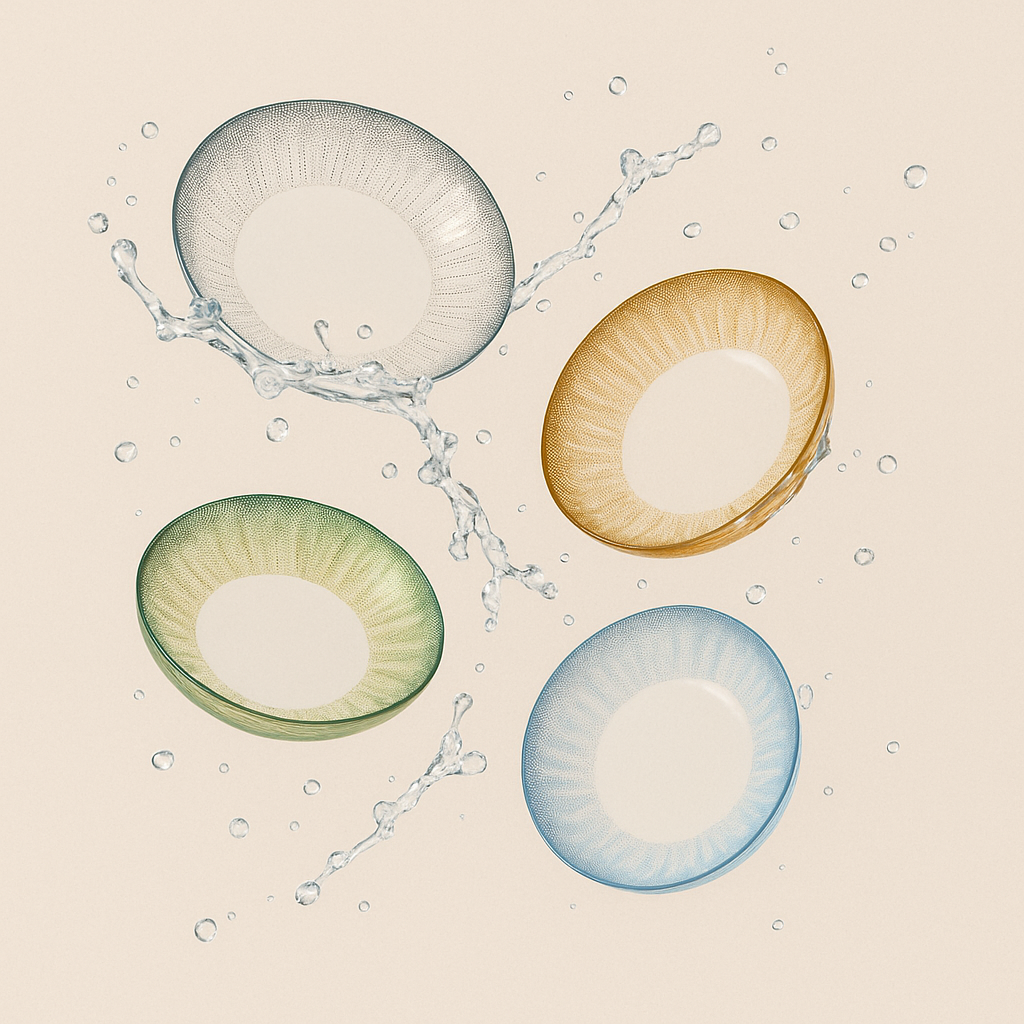In the beginning, let's know what are glasses and medical lenses?
medical glasses:
And the word (glasses) in the language means eyes, It is a way to fix vision problems in the eye, such as farsightedness, myopia (myopia) or astigmatism, and it is also used to treat some cases of strabismus or after cataract surgeries.
Prescription lenses:
They are optical means of refraction of light as it passes through, and they are made of transparent azotropic materials such as glass, and they have spherical surfaces where the two surfaces of the lens are either equal in curvature or of different curvature, according to the purpose for which the lens is used. The line connecting the two centers of curvature in one lens is known as the "axis" the lens".
The lenses are concave or convex on one or both surfaces, as they refract light rays falling on one of their sides. The convex lens is used to collect the light rays into the focus. While the concave lens is used to disperse the rays, the concave lens also has an imaginary focus.
The preferred lenses for eyeglasses are the transparent lens, but it may be recommended to use colored lenses in cases of allergic eye diseases or when the eyes are sensitive to light.
Despite the emergence of modern technologies in the field of low vision, such as LASIK, eyeglasses are commonly used to this day and are the solution for most of those who suffer from low vision, whether after or nearsightedness or even in the treatment of astigmatism.
Medical lenses are made of two materials:
1- Glass:
The use of glass in the manufacture of lenses has become less common due to weight and because of the risk of breakage because glass is a fragile material.
2- Plastic:
Plastic lenses are the most widely used in the world of medical lenses because they are shock-resistant, low in weight and easy to produce.
Types of eyeglass lenses :
The type of lenses is selected based on the diagnosis of the eye specialist and is divided as follows:
1- Spherical lenses:
It is a lens consisting of two surfaces, so that each of them is part of the surface of the sphere, and it is either a convex lens (collected) or a concave lens (split).
A- Convex lens (collected):
These lenses are thicker in the middle and thinner at the tips.
b- Concave lens (split):
As for this lens, it is opposite to the convex lens, which means that it is thinner in the middle and thicker at its edges.
2- Aspherical lenses:
They are lenses in which the two surfaces or one of them is spherical or cylindrical. This type of lens is sharper and has less aberration than spherical lenses. And this type of lens is more expensive than spherical lenses.
These lenses are used to treat cases of astigmatism, and are curved in one direction more than the other.
But there are some cases that suffer from long-sightedness and short-sightedness at the same time, and it is known as: Presbyopia, which is often experienced by the elderly. In this case, special lenses are selected and are divided as follows:
1- Bifocal lenses, also known as (Bifocal):
They are lenses that provide two prescriptions in one lens. The first prescription is for close reading, and the other prescription is for normal and long distance vision.
2- Trifocal lenses, also known as (Trifocal):
They are lenses that provide three prescriptions in one lens, the first prescription for far vision, the second for near vision, and the third for medium vision.
3- Multifocal lenses, also known as (progressive lenses):
This type of lenses is one of the best types of lenses that combine reading glasses and vision at the same time.
As these lenses are an advanced update of bifocal and trifocal lenses, they gradually change the optical power from the top of the lens all the way to the bottom so that a person can see clearly and look comfortable in the eye.
Finally, we will give you some tips to maintain your eyeglasses:
1- When you do not use your eyeglasses, it is preferable to put them in their cover to avoid breaking them and keep them in a safe and sound place.
2- Avoid using tissues or towels to clean the lenses.
3- It is important to wash it with warm water and then wipe it with a soft cloth so that dust particles do not scratch the lens.
4- It is important not to wear glasses on the head, as the upper area is larger than the eye area and thus will not fit the size of the eyes.
5- It is preferable not to put it in the pocket or on the neck, but rather put it in its own cover so as not to cause it to be scratched.
6- If you are looking for the best warranty for your eyeglasses, you can try our store: www.fiveseasonoptical.com We serve you with our eyes.







